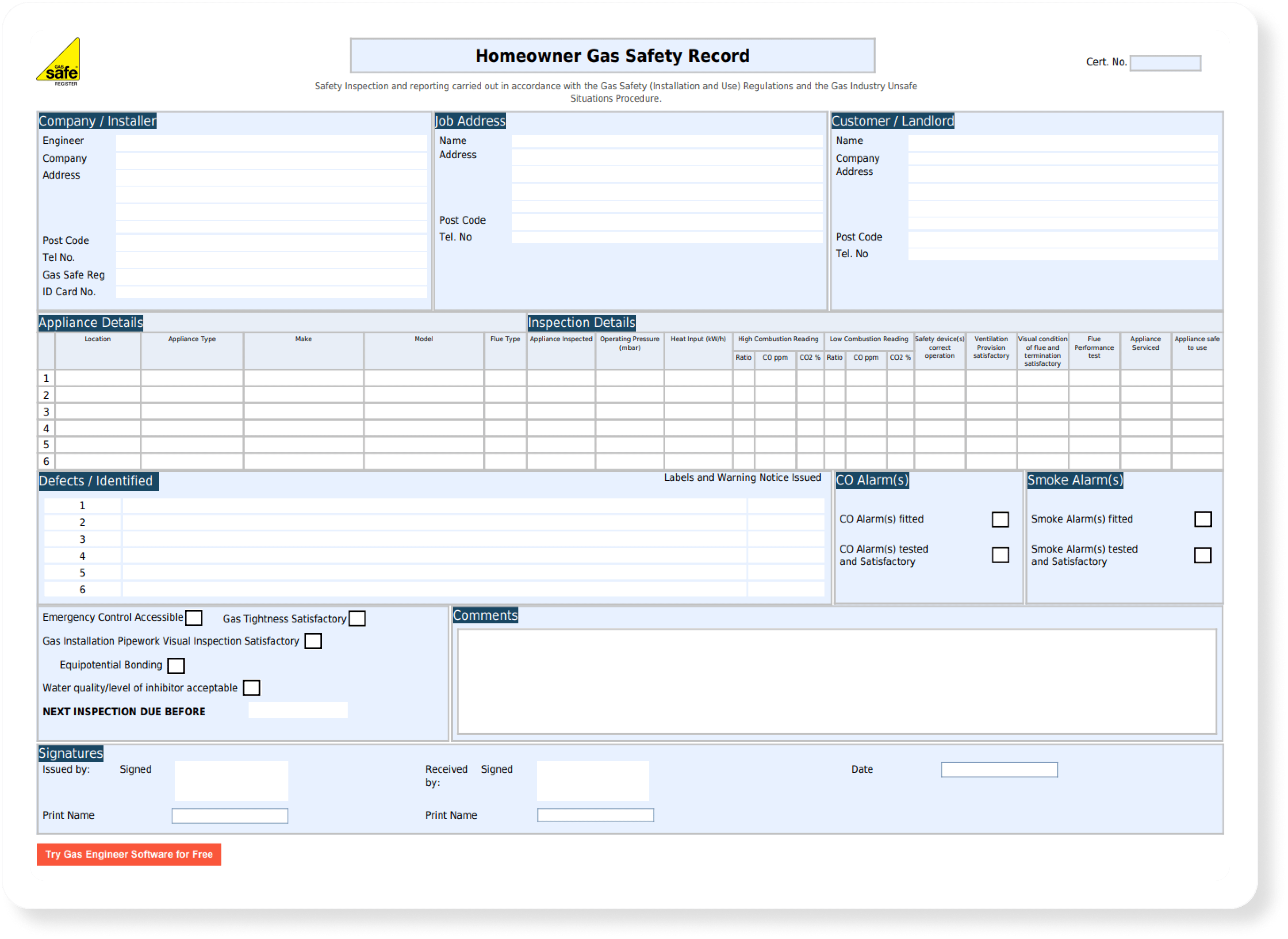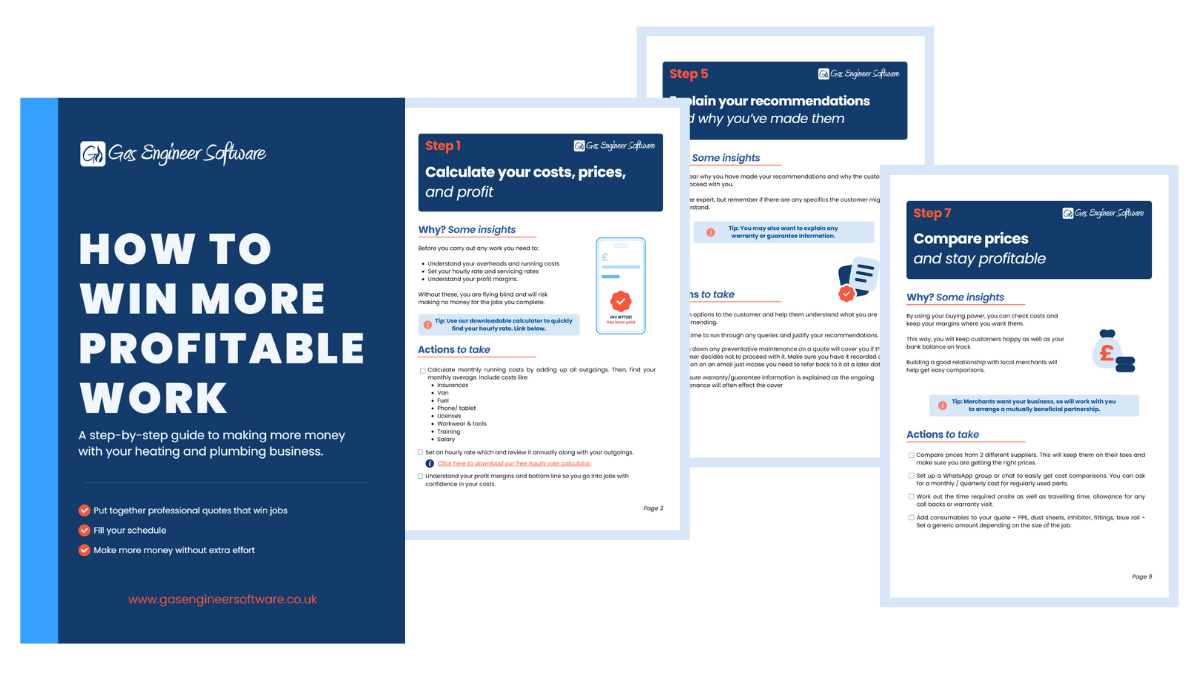Why Your Quotes Aren’t Turning Into Jobs [+8 Best Practices]
![[Featured Image] Why your quotes arent turning into jobs-min Find out how you can turn more of your quotes into jobs](https://gasengineersoftware.co.uk/wp-content/uploads/2023/09/Featured-Image-Why-your-quotes-arent-turning-into-jobs-min.png)
Picture this: You make the effort to visit a potential customer’s house, examine their issue or request, and send a quotation over.
But then they end up going with another company.
As a service company ourselves, we know how much this stings – not only to lose a potential customer, but to one of your direct competitors.
The reality is that quotes are often the first interaction with a potential customer. And, for better or for worse, even the tiniest thing can change a customer’s perception of your business.
In this blog, we’ll cover all the elements of a good quoting process from start to finish. Let’s dive in.
How many quotes are you supposed to be winning?
Even with the best possible quoting process, you aren’t supposed to win them all. In fact, we’d go as far as to say that you should be winning less than half of them.
The reason for this is because of how closely intertwined quoting and pricing strategy are (learn more about pricing strategy here). It’s important to find a good balance between your schedule and profit margins, and a high quote win-rate suggests that you’re offering too good of a deal.
The average quote win rate amongst our users is about 47% – which we expect is already higher than industry average. However, increasing the number of quotes you win by even a mere 10% could earn you £26,268 more each year (based on the average number and price of jobs).
Remember, a good quote is more than a piece of paperwork.
So why are your quotes not turning into jobs? (What a bad quote looks like)
Trades businesses can often get caught in a negative cycle stemming from a bad quoting process. Here are some warning signs:
- Quotes get sent out too late, and customers have found another company
- The pricing is too low (hurting your business and worsening service quality)
- The pricing is too high, turning away potential customers
- The quote is messy and not itemised, and the customer can’t properly understand it
- The quote doesn’t look professional and reflect your standard of work
Below are 8 quoting best practices. Some you may already know and do but, from our experience, a failed quote can almost always be traced back here. Following each of them will help you improve your quote acceptance rate, look more professional in front of customers, and ultimately grow your business. Starting from the point of first contact, we’ll walk through the average quotation journey.
8 quoting best practices

#1 Be available for phone calls
Receiving an enquiry is a blessing and an opportunity – one that you don’t want to let slip through your fingers. As a customer, the first company you ring is probably the one you imagine would be best. If they don’t pick up, you’ll just move along to the next number and company.
You of course cannot be available 24/7, but during usual office hours you should make a conscious effort to have every phone call answered – either by you, your team, or an option to leave a voicemail.
Another solution is to set up a business WhatsApp account. Some customers prefer to message rather than ring, and you can even set up automatic replies for common questions.
It’s also a smart idea to put your opening hours on your website, business cards, email signatures, and any other place your customer might have found you from. This way, they know when they can expect to be able to speak to someone and you won’t get so many phone calls while you’re off work.
#2 Arrive on time
This sounds obvious, but a surprising number of tradespeople don’t get it right. However unfair it might be, the industry has somewhat of a reputation for being late and unreliable. The good thing about this is that it makes it a bit easier to shine out from your competition – and it doesn’t take much effort, either.
Begin by setting reasonable expectations for your customers. Don’t say you’ll arrive at 11am knowing there’s a chance your previous job could overrun. Instead, say you’ll be there between 11am and 12pm. This gives them a window and is a bit more lenient on your end. As long as you stick to this timeframe, being reliable and punctual gives your customers a good impression of you before you’ve even started with the quote.
If you find that your jobs often overrun or that it’s difficult to accurately predict the duration of them, consider looking at some job management techniques. Software especially can help you stay organised and arrive on time.
#3 Never delay in sending out the quote
Speaking to countless gas engineers over the years, we’ve learnt that this is the single most important piece of advice for improving your quoting process. Why?
The last thing customers want to do is spend days waiting for a simple quote, or worse, having to chase up for it. If they do, they’re much more likely to consider an alternative company for the job. We always recommend, at bare minimum, sending the quote out on the same day.
Even better is to send out the quote on the spot.
From the customer’s point of view, this shows how organised your business is and how quickly you can get things done. It also leaves no time for them to explore alternative options.
Quick tip: Being this fast is almost impossible when you have to create and send quotes manually. Software that offers professional-looking templates and is integrated with your customer’s data makes this process lightning fast.
#4 Make sure your pricing strategy is on point
Now we’re onto the actual quote paperwork. Unsurprisingly, there’s several things you can do here to improve your win rate. Let’s start with the most obvious: pricing.
This is a whole topic in itself for another day. But for the time being, even the basics can help vastly. The end goal here is to find a price point that strikes the perfect balance between being enticing for customers, and making you enough profit.
You may find that lowering the price helps you win more quotes. But you need to look at the full picture and understand that this will mean more work for less profit. At the end of the day, the most important thing is to not undervalue your work.
While we’re on this note, it’s also a good idea to include payment terms within the quote. This will help clear up any potential confusion.
#5 Break down the costs into reasonable, bite-size chunks
Beyond the total price of the quote, you should consider splitting the cost into its core components. For example, instead of jotting down one line item for a gas boiler replacement, split it up into: your callout fee, the price of the new gas boiler, hourly labour costs, and any other necessary component.
This will help provide specificity to the quote and, again, indicate your professionalism and that you take the time to do every aspect of the job properly.
You should also clearly state whether it is a quote or an estimate, and be specific on precisely what services are and aren’t included.
#6 Address the customer’s concerns
This one is primarily for customers working with you for the first time. Without first-hand experience of your workmanship, going the extra mile in assuring them can be all the convincing they need to confirm the quote.
If possible, we recommend adding a clearly visible guarantee to the quote. Many tradespeople offer a 1-year workmanship guarantee to ensure peace of mind and that if anything does go wrong, they aren’t going to be paying out of pocket to fix it.
You could also include a link to customer testimonials or your online reviews within the quote. This way, your customer’s are able to speak for you and you can show the pride you take in your work.
#7 Make it look professional
Nobody is expecting your quote to be a masterpiece of graphic design. However, adding a few key elements to create a professional-looking quote can help significantly.
Simple things like having clean-looking and standardised fonts, zero spelling errors, and a clear layout are essential. It’s also important to include your logo, and that of any partners (like Gas Safe Register). Read more about how Gas Engineer Software allows businesses to customise their quotes.
#8 Be ready to answer any questions about the quote quickly and thoroughly.
Don’t simply send the quote and forget. Your customers may have questions about things like the scope of work, pricing, and guarantees. Making sure they have an easy point of contact is crucial, as is being quick and detailed in your response.
Just like when they first reach out to you – if you aren’t there to answer, they’ll quickly start looking elsewhere.
Next steps:
If you’ve been thinking about implementing software into your workflow to save time, here’s what you can do next:
- Visit our resources centre where you'll find more articles like this one and our free gas rate calculator.
- Start a free trial to see exactly how our software works for your business.
- Watch our video demo to get an idea of how our software works. You can also book a 1-on-1 session with our customer success team for a more personalised experience.
- Know an engineer who's still using paper? Help them and us out by sending our software their way!

